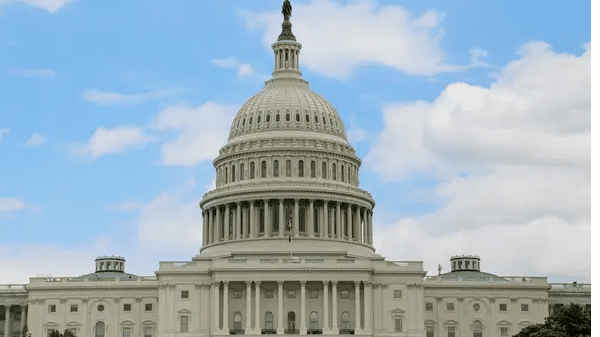The budget reconciliation process was used in the US Senate on Sunday to give passage to the Inflation Reduction Act, a crucial legislation that also addresses climate change, tax regulations and healthcare.
US Senators had a busy day at Capitol Hill, with a “vote-a-rama” that included a large number of proposed amendments and alterations to the existing bill. The evenly divided Senate ended up voting along party lines and Vice President Kamala Harris cast the tie-breaker.
Also Read: US House Speaker Nancy Pelosi looks to ‘swiftly’ pass climate and healthcare spending bill
What is the budget reconciliation process?
The budget reconciliation process is rarely used in the Senate, allowing members of a party to get a legislation cleared using only a simple majority. In case of a tie, the US Vice President will cast the deciding vote.
US Congress’ rules dictate that the US House of Representatives typically needs 218 votes to pass a legislation, half of all possible votes in the chamber. But things get complicated in the US Senate, the upper legislative chamber.
Most legislations, after the implementation of the filibuster, require at least 60 Senators to vote in favour of a legislation to give passage. The US Senate has 100 lawmakers, two from each state of the US.
This is where the budget reconciliation process comes in handy. Special procedures of the US Senate allow the body to pass a small number of budget bills with just 50 votes. The exemption exists for urgent budget bills that can not afford a political holdup, according to NPR reports.
Why is it not used more often?
The budget reconciliation process is complicated. The special procedures say that the exemption can only be used once each year, which is why parties pick and choose their preferred legislation. The rules also define what qualifies as budget-related legislation.
Also Read: How climate groups reacted to Senate Democrats’ push of health, climate bill
When has this been used before?
The use of budget reconciliation process has been increasingly used through the last three presidential terms. Then-President Barack Obama‘s administration used the process to boost health care in 2010, a move that was criticised by Republicans.
GOP lawmakers used the budget reconciliation process in 2017 to pass a tax-reducing legislation. It was also used to reverse the Affordable Care Act under Donald Trump’s administration.







